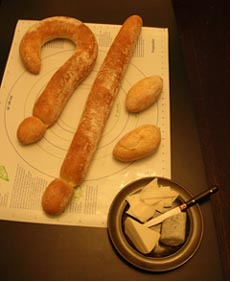This is the first installment of the Copywriting Guidelines – the series of effective tips which will help you to become a better writer.
You should store this remedy in a safe place (away from the sun, water and competitors) and use it according to the prescription. The drug doesn’t have any side effects but should be taken regularly to see the improvement.

Let’s start with such powerful language tool as punctuation. While words exist to describe the multi-faceted world, punctuation allows to understand the description.
NB: If you still believe that punctuation was introduced by aliens to mess human civilization and has no importance, read the famous panda joke from Eats, Shoots and Leaves by Lynne Truss:
A panda comes to a cafe, eats a sandwich, then draws a gun and starts shooting into other patrons.
“Why?!”cried the surviving waiter from behind the counter, as the panda was moving towards the exit. “I’m a panda, said the animal, tossing a badly punctuated wildlife manual over his shoulder. Look it up.”
The confused waiter opens the book and reads: “Panda. Large bear-like mammal native to China. Eats, shoots and leaves.”
So, learning punctuation rules you may not only impress your readers but – who knows? – save somebody’s life 😉
Apostrophe
Do use it to form the plurals of lower-case letters for clarity:
- cross your t’s and dot your i’s
Do not use the apostrophe in plurals of capitalized abbreviations and decades:
- DVDs
- the 1980s
Brackets
Do use round brackets (parentheses) when you want to give some extra information to your readers. As for square brackets [], they are good in quotations to keep the meaning of the sentence once some words are left out:
- “It [Cleopatra movie] was really my hour of triumph,” admitted Elizabeth Taylor (born 27 February 1932).
Do not overuse the parentheses, as they are disruptive to fluent reading. Give preference to commas and dashes, where possible:
- Tomorrow my Bonny, who had been over the ocean, will be brought back to me.
Capital Letters
Do capitalize the word “branch” when it means a specific branch, the words “division” and “grade” when they are followed by a number, and subjects when you refer to specific courses:
- Both Division 3 teachers and Grade 1 students have come to listen to Contemporary Political Studies, a new popular course that the professor of Political Science Branch gave.
Do not capitalize these words when they are in plural:
- Neither divisions 1 and 2 of teachers nor grades 2 and 3 of students attended those scandalous – how do you call it? – political studies that casted a shadow on all branches of our college.
Colon
Do use a colon to introduce an explanation, a list or a quotation:
- Most web masters pay attention to grammar: they want to be treated like pros.
Do not put a dash after a colon:
- So, the Lord said: “Go down, Moses.”
Comma
Do use a comma in a list before the final “and” only if the meaning wouldn’t be clear without it:
- His favorite movies are about Indiana Jones, Rocky and Harry Potter.
- His favorite movies are about Indiana Jones, Harley Davidson and Cowboy Marlboro, and Harry Potter.
Do not put a comma between the month and year in dates, but add it if the day is mentioned:
- April 2008
- Tuesday, April 1, 2008
Dash
Do put dashes to explain, clarify and summarize a sentence:
- He had talked for an hour about one of his main qualities – exceptional modesty.
Do not mix up a dash with a hyphen which is meant to link words together:
- Her aunt – who is a cheerful 98- year-old lady – is quite fond of mountain biking.
Ellipsis
Do insert a space before and after an ellipsis if it is in the middle of the sentence:
- Basically three points are enough … don’t make a fly-blown picture out of your copy.
Do not use periods to create the ellipsis character. Hold down ALT and CTRL and press the period key instead.
Full Stop
Do use a full stop with an abbreviation for number 1:
- No. 1
Do not use it in other abbreviations:
- BBC
Quotation Marks
Do place commas and periods inside quotation marks, and colons and semicolons – outside them:
- Mark Twain said: “April 1. This is the day upon which we are reminded of what we are on the other three hundred and sixty-four.”
Do not use double quotation marks if you refer to something new or unfamiliar – use single ones instead:
- This client is used to adding ‘asap’ literally to every message.
Semicolon
Do use a semicolon to separate either phrases containing commas or statements that are closely related to each other:
- Each department is headed by several managers: Ron and Sue; Joe, Tony and Liza; and Jake and Alice.
Do not put it, however, when a simple comma is more appropriate.
Slash
Do use a slash to indicate alternatives, to separate lines in poetry and in URLs:
- professional SEO copywriting/sales letter writing
- http://www.copywriting911.com/copywriting-services/
Do not put spaces before or after a slash.
And one more thing, next time you see that illiterate panda, just get him to read this ![]()
Image by pdxlogophile
